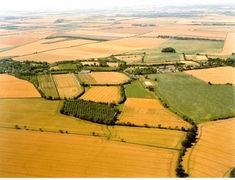
Bayer Cropscience officially launched its Chishill biodiversity site at a packed event last week.
The site, in the undulating border between Cambridgeshire and Hertfordshire, is still used for pack trials, but has increasingly been cultivated to promote a sustainable eco-system. It now has among the highest numbers of beneficial insects of any site in the UK.
Bayer says the site and its Shelford twin are designed to ‘promote practical and meaningful approaches to improving on-farm biodiversity.’
Chief among this is the promotion of ‘field margins’ - strips of fallow land and grass alongside the main farming plains. At Chishill, the company has left a series of defunct apple and plum orchards fallow in outlying corners, meaning that grasses, insects and bees flourish in those areas, positively influencing output and the stability of output in the fields. Additionally, for aquatic life, there is a small pond in a far corner, which provides cover for frogs and other semi-aquatic life in the summer, which then winter in the nearby fields.
To provide a buffer between the farmed crop and ditches, hedges and streams are in place. This provides additional wildlife habitats as well as preventing the spread of weeds into the growing crop.
Much of the farm is ringed by hedgerows to provide protection from the elements. The net result it that important bird species such as the bullfinch, yellowhammer and turtle dove abound, along with brimstone, common blue and gatekeeper butterflies. Bee orchids and rare arable plants such as Loose Silky Bent and Round Leaved Fluellen are also present. Both sites took part in the South Cambridgeshire Arable Weed Survey in 2004, and the following species of note are already present: Rough Poppy, Nightflowering Catchfly and Round-Leaved Fluellen.
Bayer recommends having a range of different hedge structures on the farm, which thereby help to ensure a food source throughout the winter.
This can be achieved by rotational cutting which encourages the production of berries.
Hedges provide essential nesting sites and therefore must not be cut between March and July. Hedges and wild flower field margins also provide nesting sites for farmland birds, cover for insects, berries (which are animportant food source), corridors for small mammals, foraging areas, food plants for butterflies and moths.
Managing director of Bayer CropScience, Andrew Orme, stressed that with modern farming techniques, more long-term agricultural solutions must come from working hand-in-hand with nature.
“We have been developing our sites at Chishill and Shelford for the last four years, implementing measures to enhance the wildlife alongside our commercial operations, thus proving that the two can work hand in hand,” he explained. “We now want to share our work and experiences and show how implementing these measures can actually have a positive environmental effect. ”
“The Biodiversity Centres are a platform to discuss and demonstrate conservation farming to growers, distributors, consultants and agronomists and they are a way of informing the wider community and local schools of the changes that have taken place in modern agriculture.”



